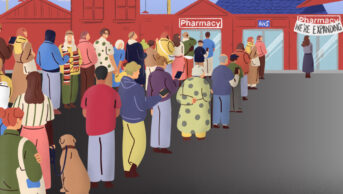
shutterstock.com
GP receptionists could “signpost” patients to pharmacists without the need for a doctor’s appointment to help ease pressure on general practice, a report by the Royal College of General Practitioners (RCGP) has said.
‘Spotlight on the 10 High Impact Actions’, published on 4 May 2018, is the result of the college’s research on the effectiveness of NHS England’s Time for Care programme, which introduced ten high-impact actions — a range of initiatives introduced two years ago with the aim of increasing capacity in general practice and cutting GP workload.
The report also recommended widening teams by employing clinical pharmacists, increasing social prescribing, and supporting people playing a greater role in their own health, which could include visiting their community pharmacist for advice and support.
In 2017, an RCGP survey of 823 GPs in England asked what practices were doing to reduce workload, considering the ten high-impact actions. Some 28% of respondents said they were working in partnership with other practices or pharmacies.
The RCGP said it was “calling on NHS England to expand schemes with high potential to reduce administrative work for GPs, and … calling on government to ensure every GP surgery has funding to have access to a dedicated social prescriber in a bid to tackle crippling GP workload and effectively signpost patients to the right services”.
A spokesperson for the National Pharmacy Association said: “One cost-effective way to release more capacity into the primary care system would be to develop community pharmacies as neighbourhood health and wellbeing centres, working collaboratively with GPs. It’s about liberating the clinical potential of all pharmacists, especially those available without appointment, in community pharmacies across the country.”
You may also be interested in
Using a support and development service to facilitate successful integration of pharmacy staff across a GP federation

Pharmacists are the success story of general practice, and they are here to stay
